For every marketing agency, the path to success involves staying organized and being efficient. And monday.com can help you with that by streamlining workflows and improving team collaboration. You can track deadlines, monitor progress, and ensure transparency across your entire team. The platform makes it possible to manage everything from client projects to recurring tasks with ease.
Keep reading to get the details on the features you can use to transform your workflow for better. I’ve also made a video tutorial of the whole process:
The Key Features to Transform Your Workflow
In this blog post, I’ll demonstrate the workflow of a company that works with several clients, with tasks divided across different categories.
This workflow will allow you to see all of your projects at a high-level and a low-level, as well as keep track of ongoing tasks and deadlines. It also maintains full transparency regarding where all tasks are at any given time.
Let me walk you through everything we have on the boards:
1. The Big Picture Board
The board gives you a bird’s-eye view of all your clients, including the clients they’re onboarding, active clients, and past clients. You can track key details like who the account manager is, what services you’re providing, what the retainer fees are, etc.
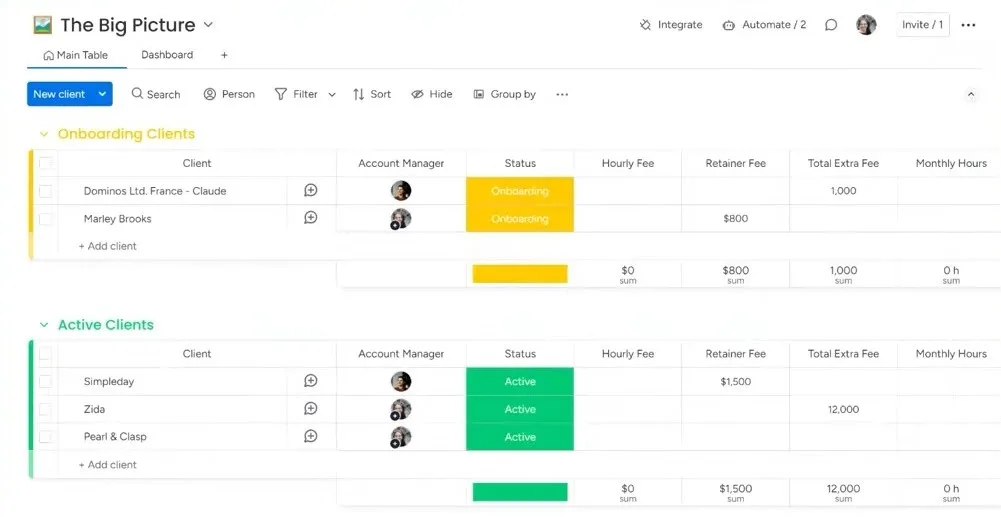
For example, when a new client is onboarded, they are entered into this high-level board that outlines their journey. The process begins with collecting essential assets like logos, brand colors, and images via a form sent to the client. Once received, this information is stored and becomes part of the client’s library.

You’ll get all the information centralized on this board, so you never have to dig through multiple places to find them.
2. Task Board
The task board is the core of our project management system, serving as the central hub for all client-related tasks, campaigns, and ongoing projects. It links to various other boards, providing a comprehensive overview and allowing easy tracking of both recurring and one-time tasks.
a. Recurring Tasks Board
Marketing agencies often have tasks that repeat regularly. These tasks are assigned to specific team members with a set frequency, whether weekly or monthly.
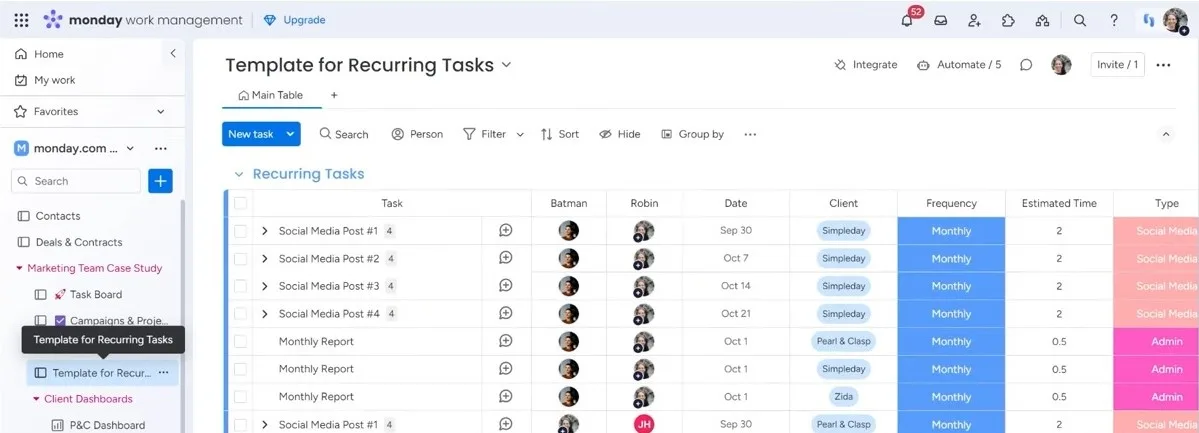
With this board, you can set up automations to ensure these tasks are done on time. When a due date arrives, an item is automatically created on the task board, and the date is updated for the next cycle.
The board works as a hub for all ongoing tasks. If a client adds something new to their contract, it’s added to this board. That way, everything stays in one place and is always up-to-date.
b. One-Time Task Board
A marketing agency has plenty of one-time tasks too besides the recurring ones. This board is designed to keep things organized and efficient by categorizing tasks into different groups, such as “open tasks,” “ideas or backlog,” and “completed items.”
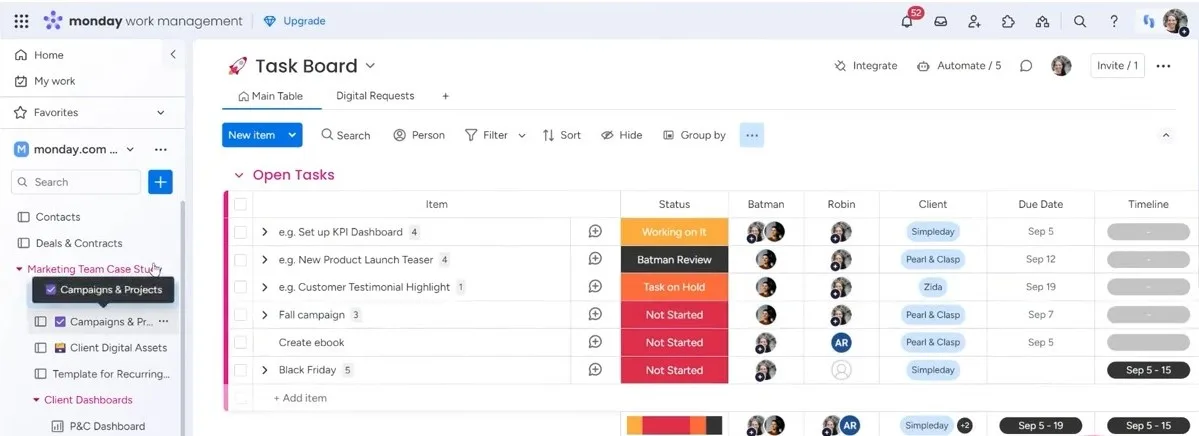
This structure helps the team stay on top of their work while also making it easy to track progress. For instance, when a task is marked as complete, it automatically moves to the “completed” group. This is done with just one click, like when you mark a test task as done, it seamlessly transitions from the open tasks section to the completed section, visually disappearing from the active list.
You can add these one-time tasks to this board, according to the demand of the project. For example, if we need to create an eBook, we can quickly add it to the board and fill out key details like the task’s status, the “Batman” (the person responsible for overseeing the task), the “Robin” (the one executing it), and a plenty of other parameters.
This fluid system ensures that the board stays up-to-date and helps everyone quickly see what’s been accomplished and what’s still in progress.
c. Managing Social Media Tasks
This one can be a part of the task board. Social media tasks are also a big part of a business’ workflow these days. These tasks often involve sub-items because content is repurposed across various platforms. For example, if there’s a product launch teaser, it needs to be posted on several channels, such as Facebook, Instagram, LinkedIn, etc.
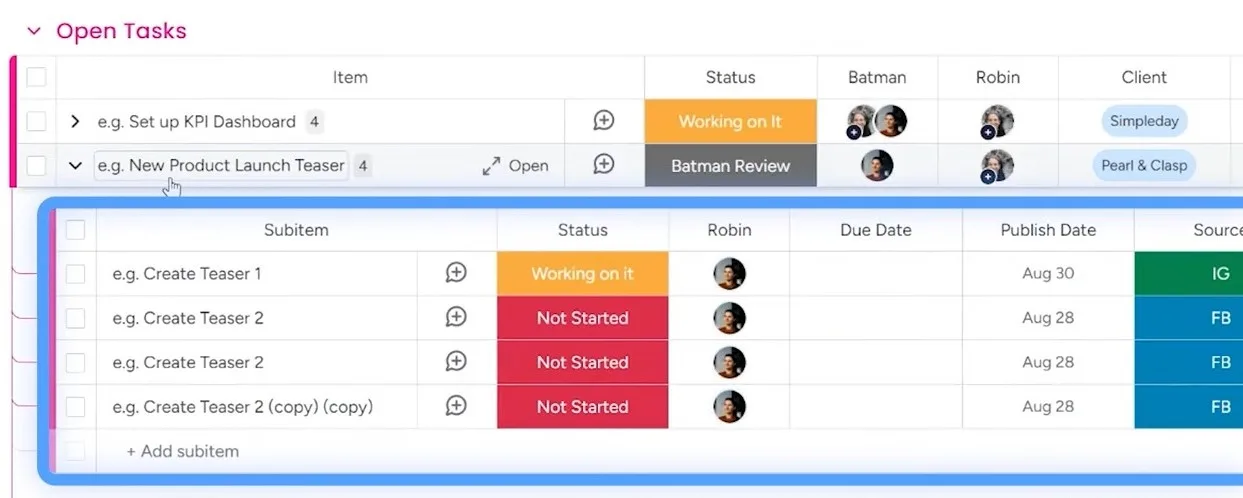
For each social media post task, you can add a progress bar, broken into phases: content, creative, approval, and posting. As one phase is completed, it automatically moves to the next person (designers, for example). This ensures the task moves through the process smoothly and is never missed.
On the task board, tasks are visually tracked by their progress, allowing the team to easily see how far along each project is. For example, you can see that a social media task is just 13% complete, while another one is 50% done.
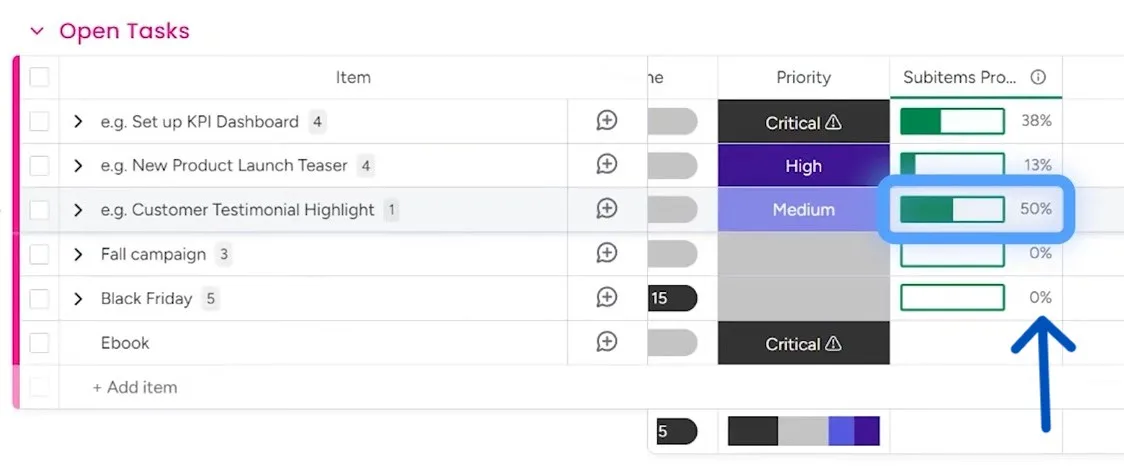
This percentage-based system provides a quick, intuitive overview of task completion.
3. Dashboards for Client Insights
The tasks on the task board seamlessly integrate with a client-specific dashboard, providing a comprehensive view of each client’s progress. On this dashboard, you can see key details like the dates when content is scheduled to be posted, the platforms where it will appear, and other important metrics such as the number of tasks, pending client feedback, and completed tasks for the month.
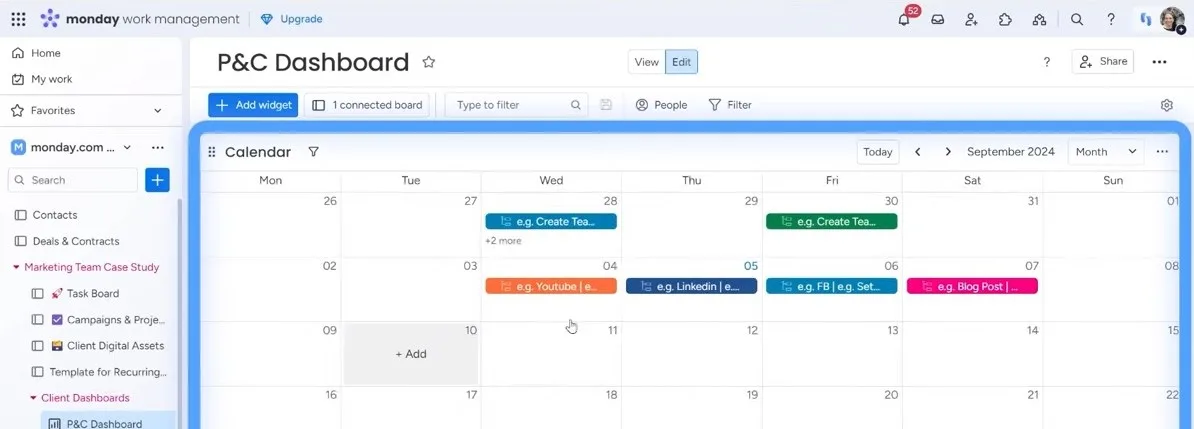
This dashboard not only helps the team stay organized but also serves as a valuable tool for reporting. At the end of each month, this detailed overview is used to create a client report. It has a summary of all the work completed, the status of ongoing tasks, and any client input received. It’s an efficient way to keep clients informed and demonstrate the progress made on their campaigns.
4. Campaigns and Larger Projects
Campaigns and product projects often involve more complex processes that require a high-level overview to keep everything on track. For example, when launching a major campaign like a Black Friday promotion for a client, the team uses a dedicated board to organize all the moving parts.
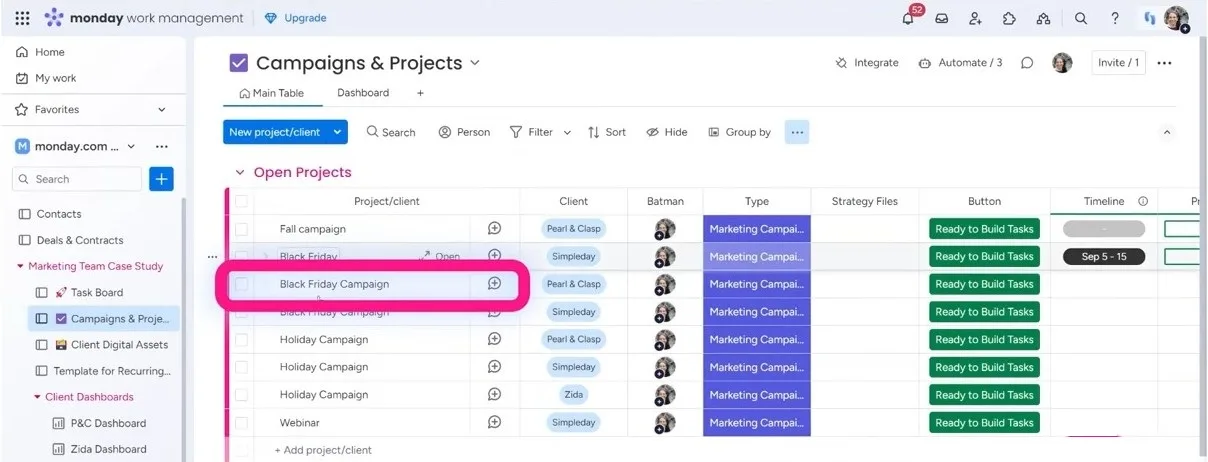
Once the strategy files are ready, they click a “Ready to Get Started” button. It’ll trigger the creation of a new task that appears on the connected boards, including the task board.
So, if you go to the task board, you’ll find a new task titled “Black Friday Campaign.” This task is already automated to create a bunch of sub-items, like landing pages, email campaigns, coupon codes, and YouTube videos.
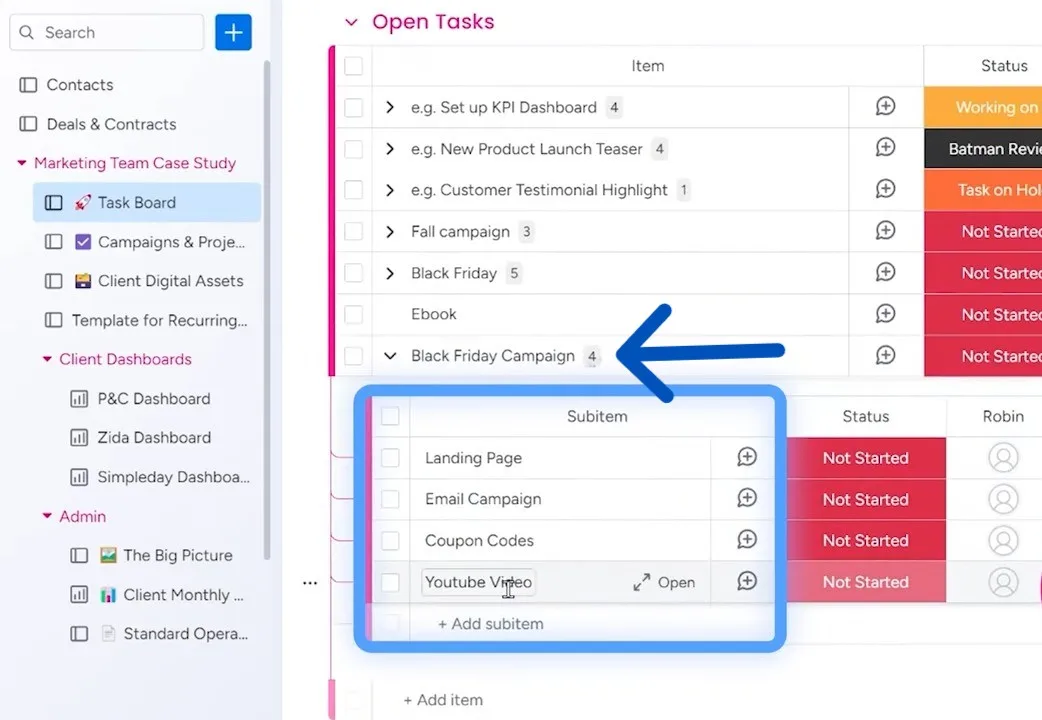
This streamlined system ensures that all the necessary tasks for a campaign are automatically generated.
As work progresses, the task status is updated in real-time. It allows everyone to see the status of each task, whether it’s in progress or completed. So, you can get a clear picture of progress on a macro and micro level. The overview board shows high-level metrics for the entire campaign, while task-level details let the team track individual tasks.
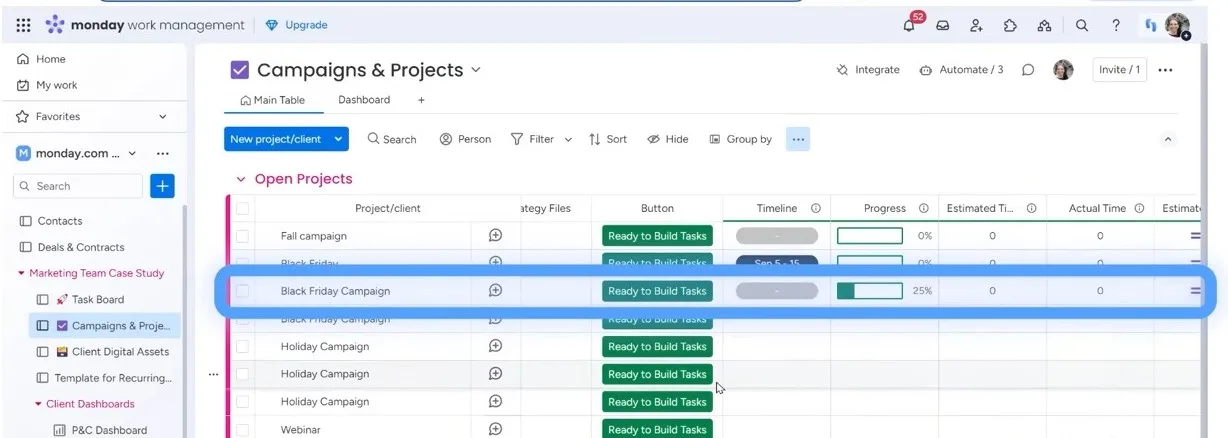
This information also feeds into a dashboard, which helps with both client reporting and monthly billing. By comparing estimated hours against actual time spent, the team can assess whether they are on track, allowing for better insights into client performance and more accurate planning.
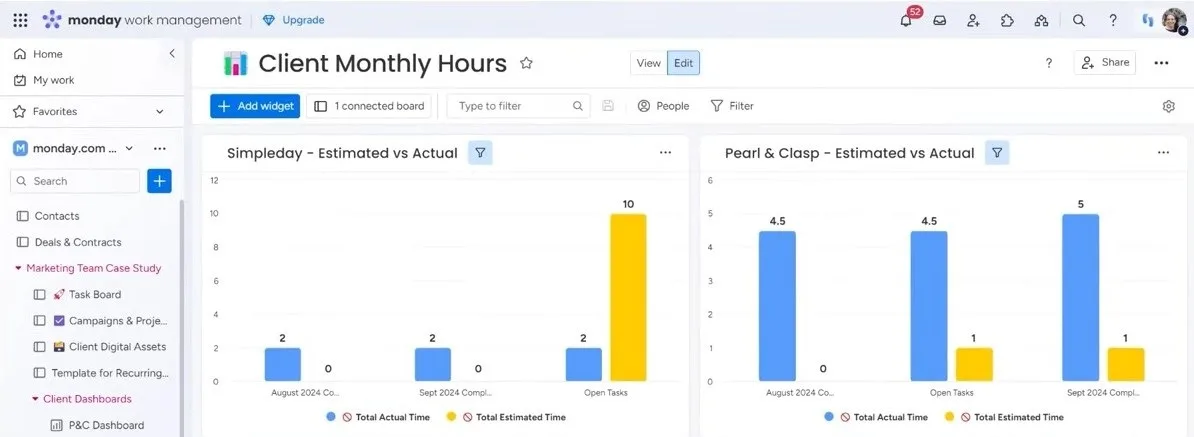
Do you need to put your agency’s workflow back on track? Simpleday can help you master monday.com and seamlessly integrate it into your projects. Contact us and let our expert team guide you to your goal.



